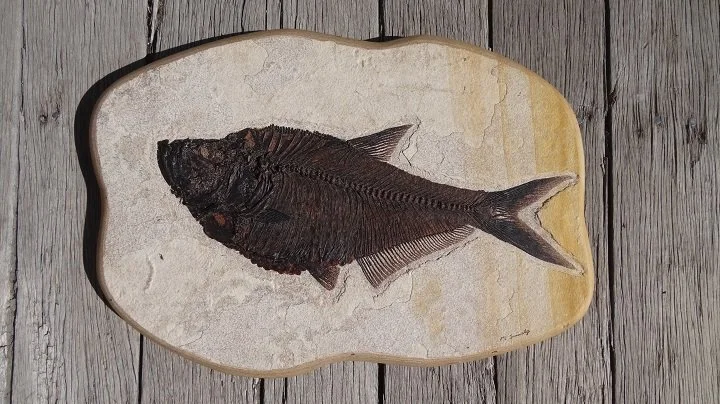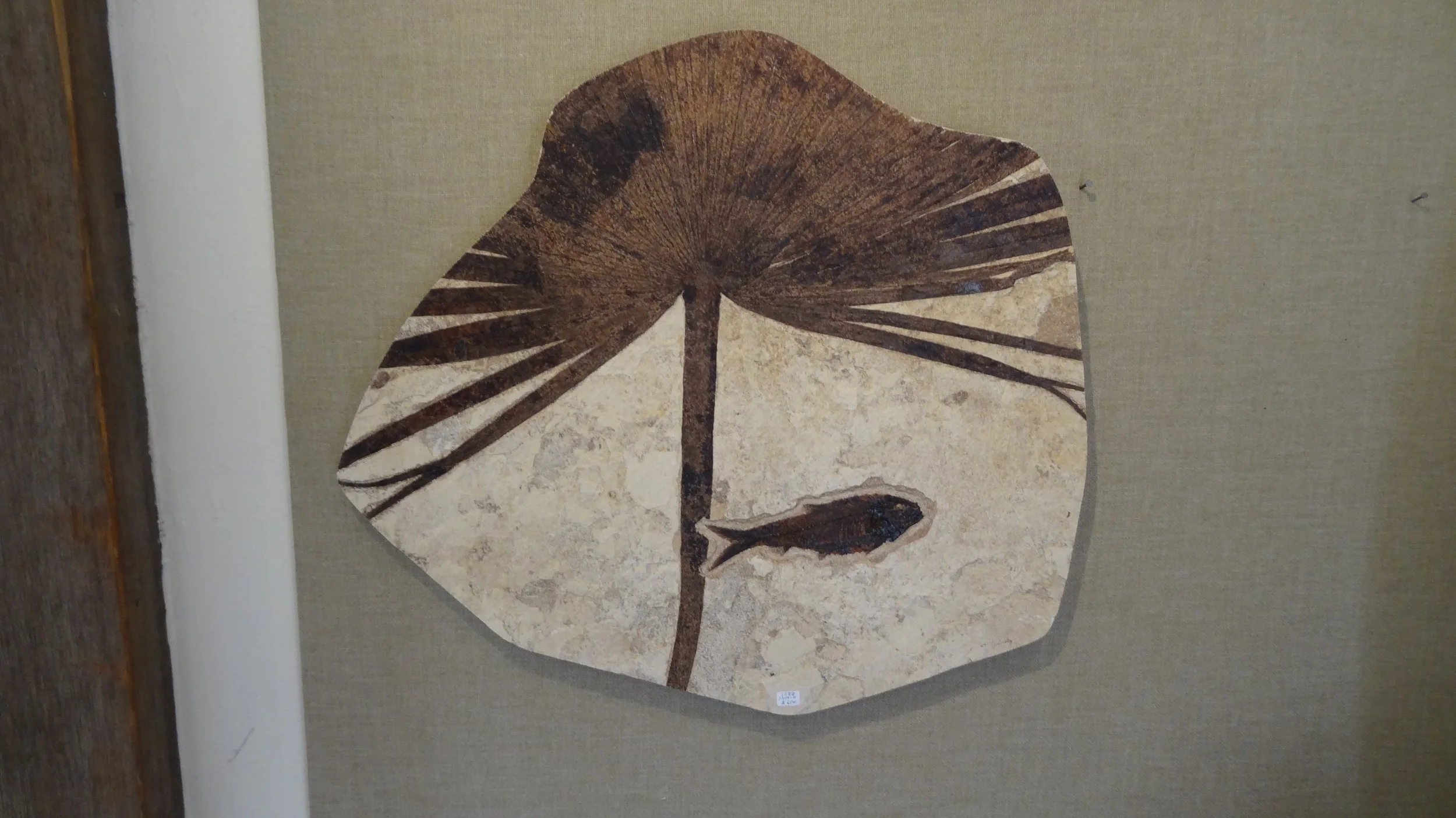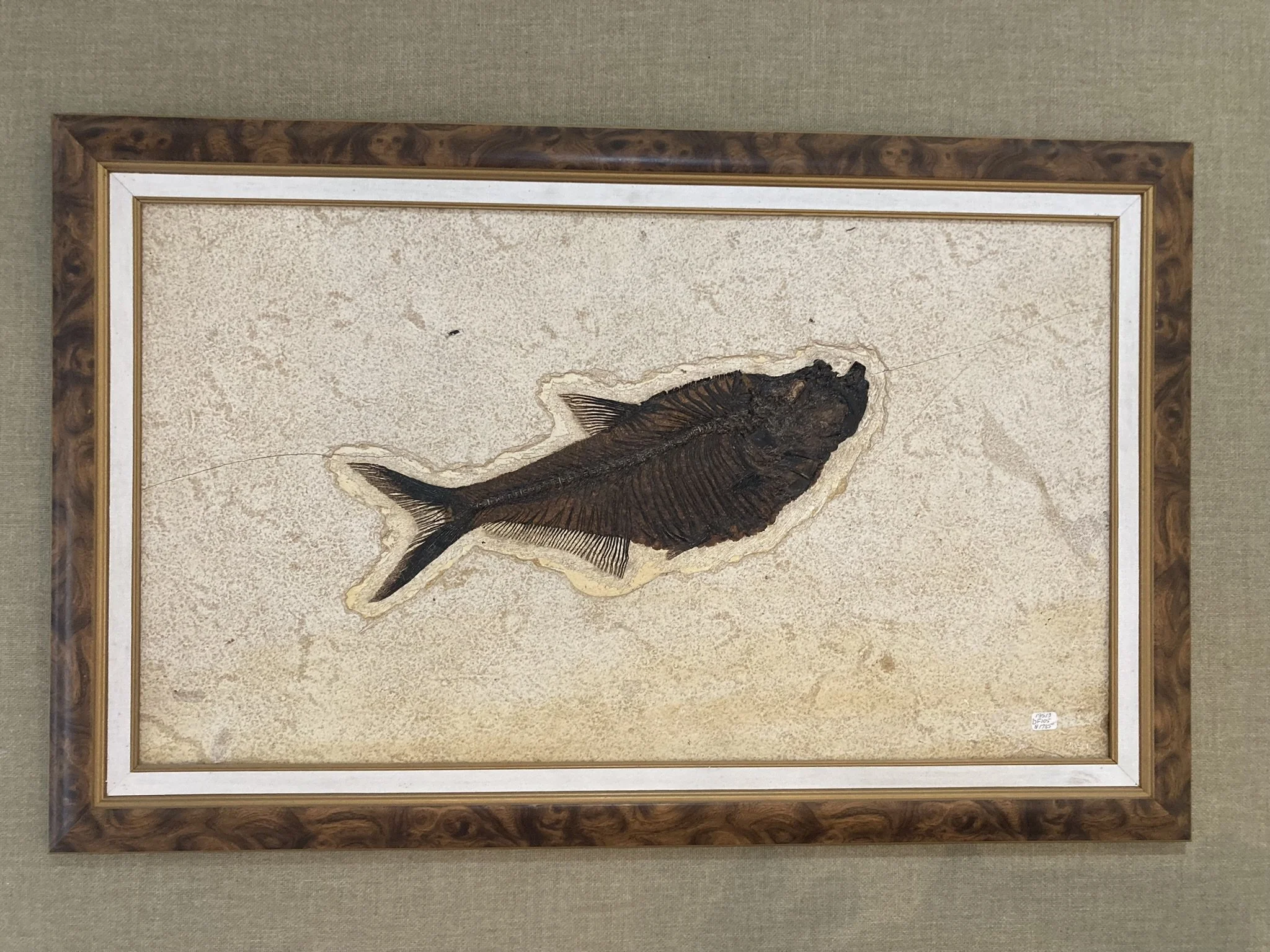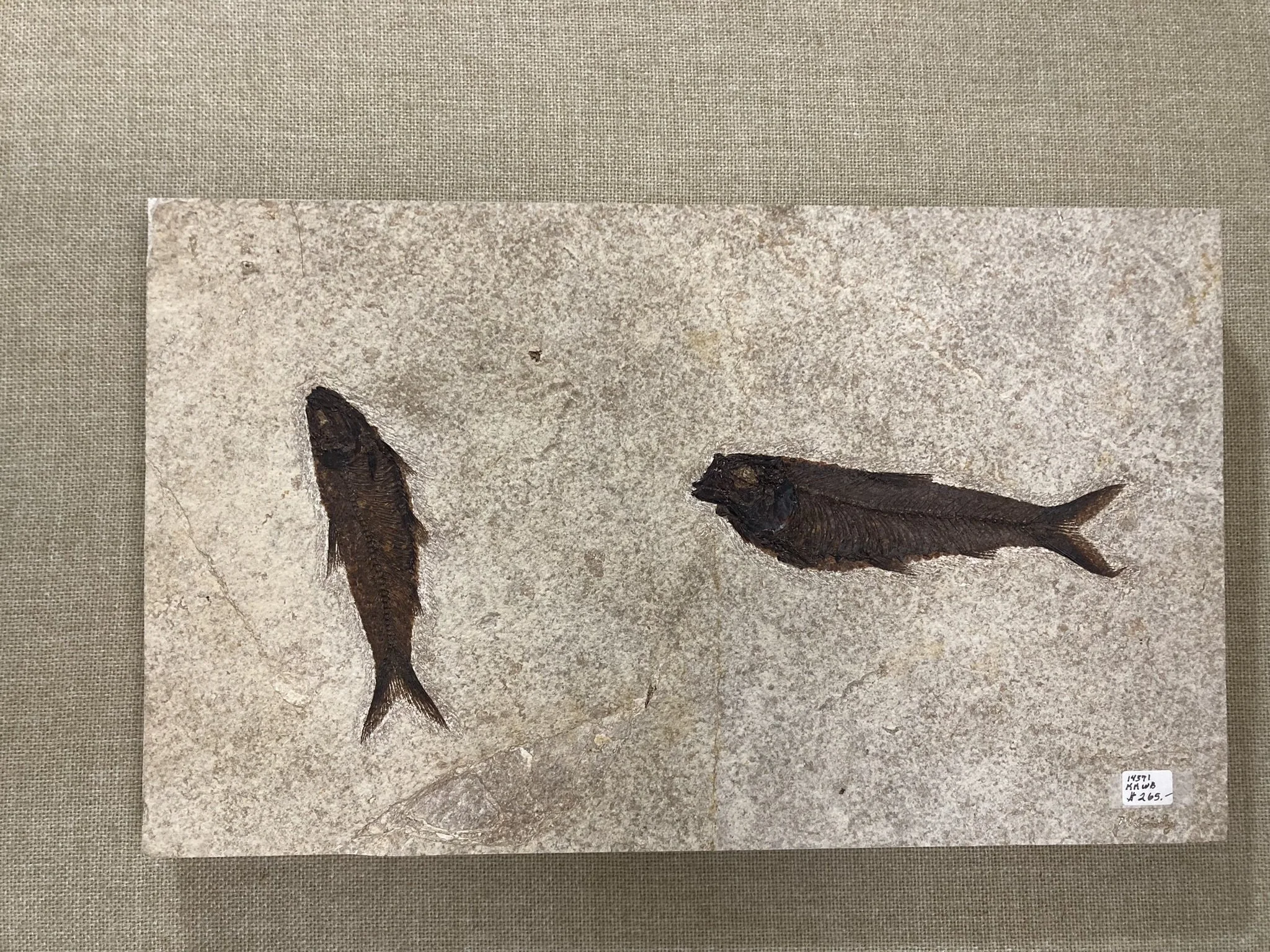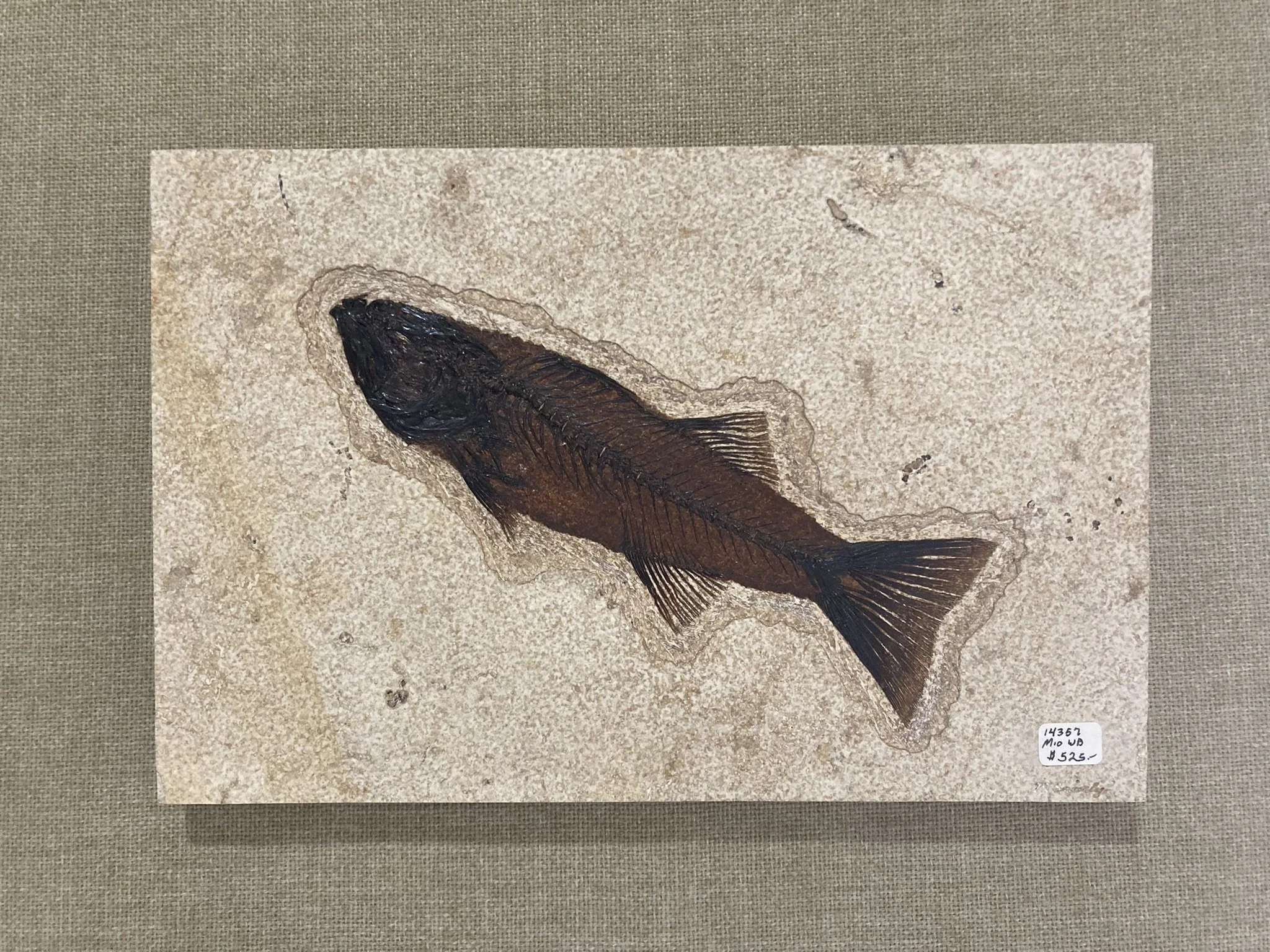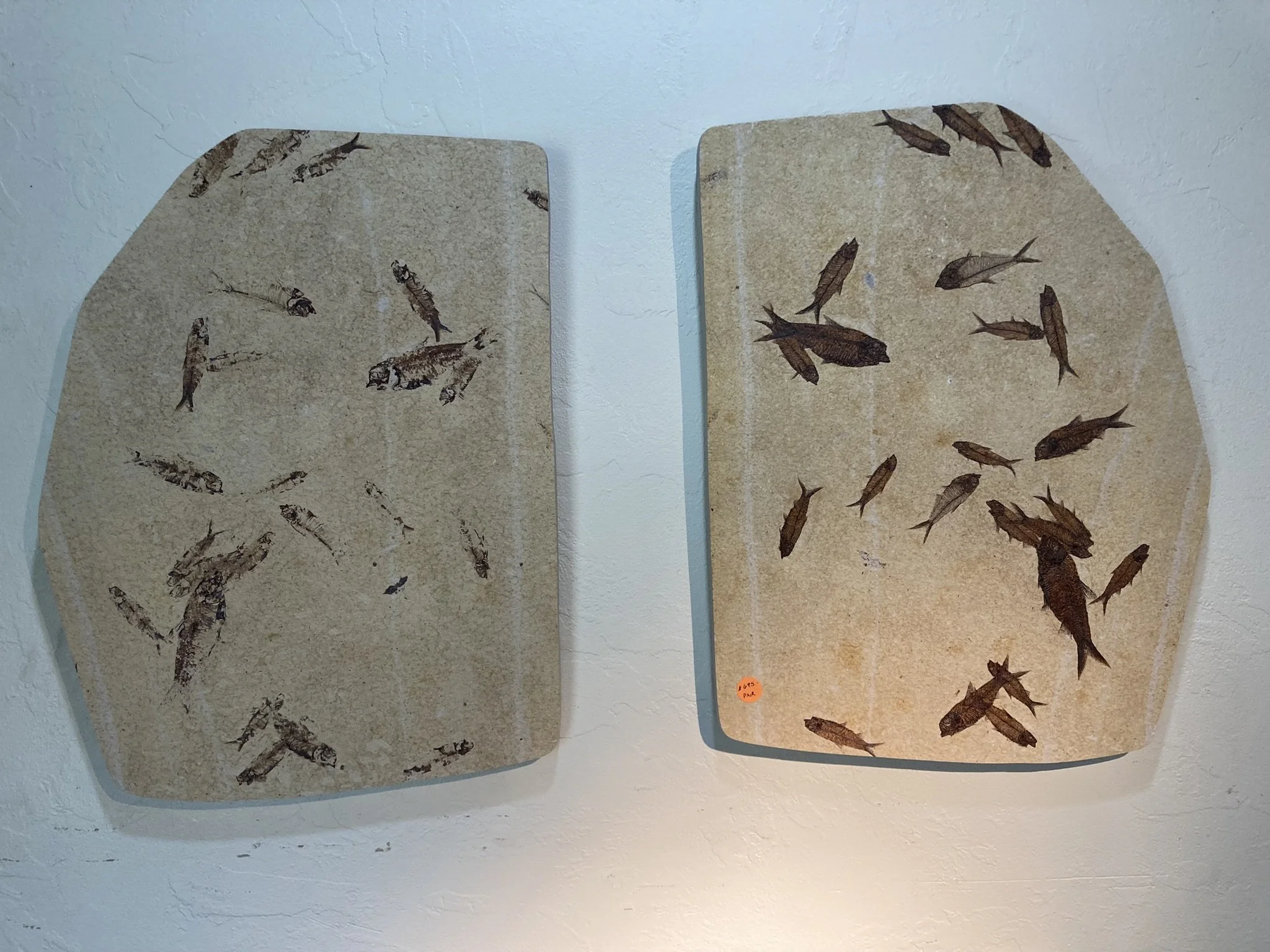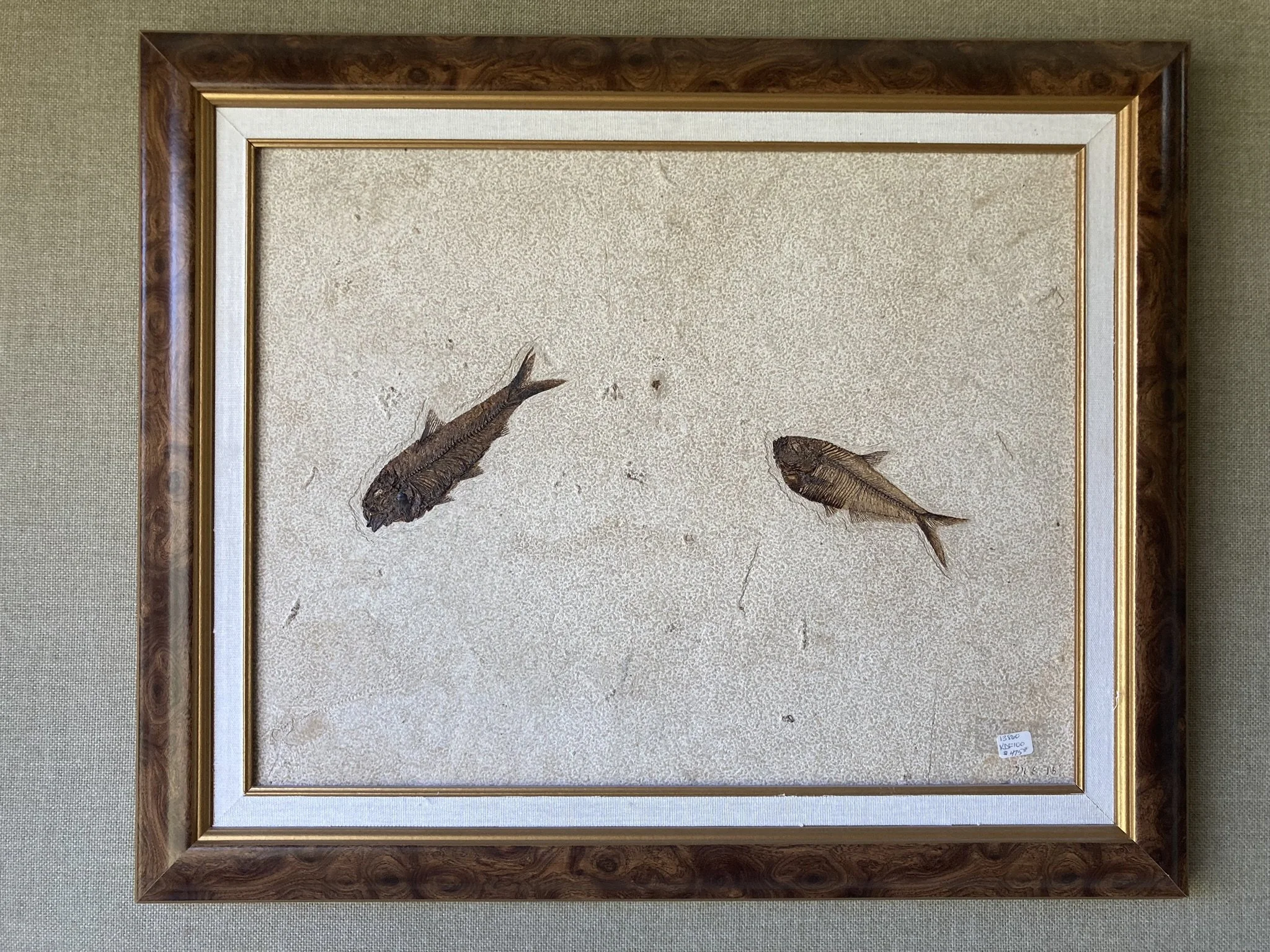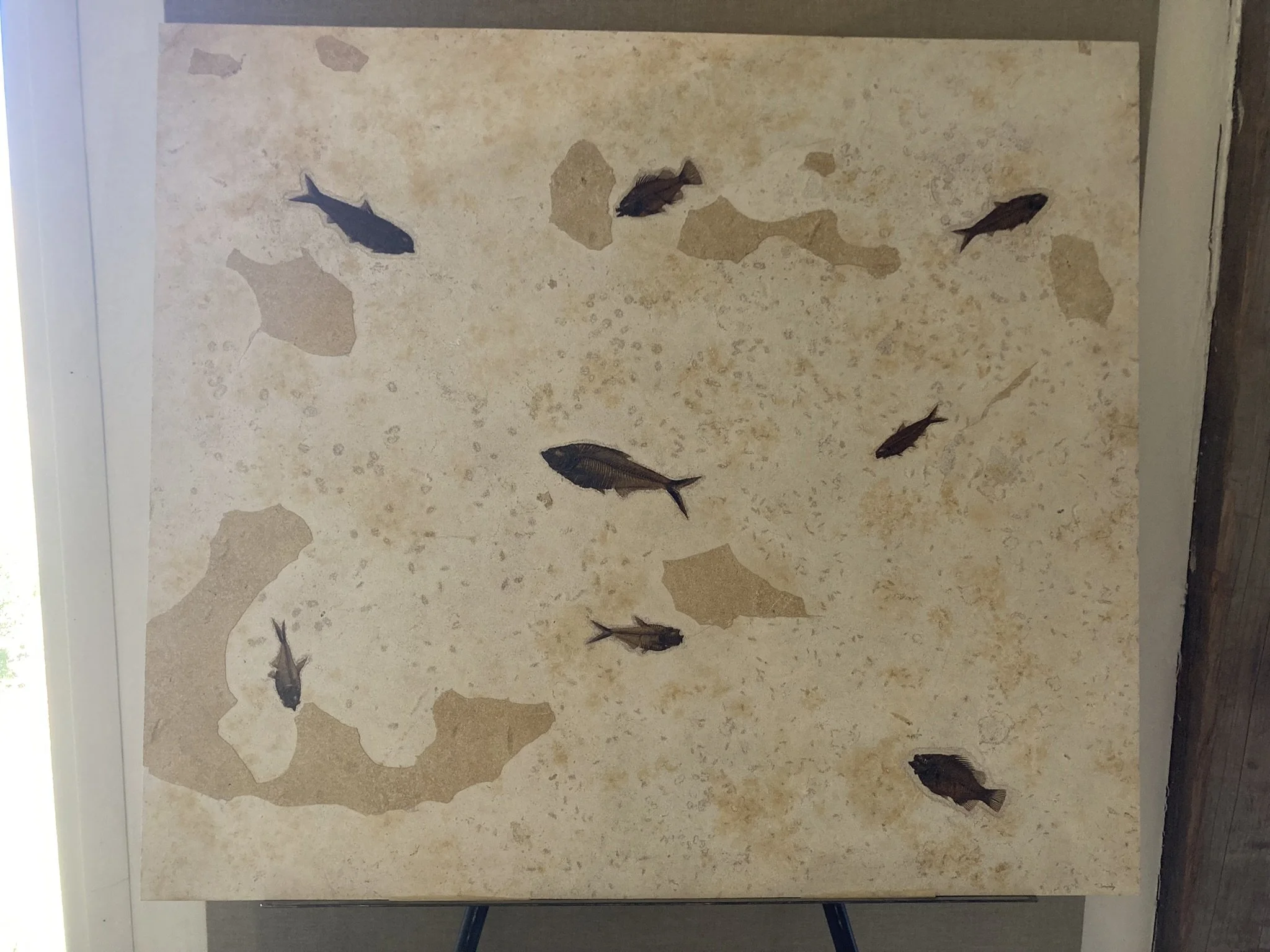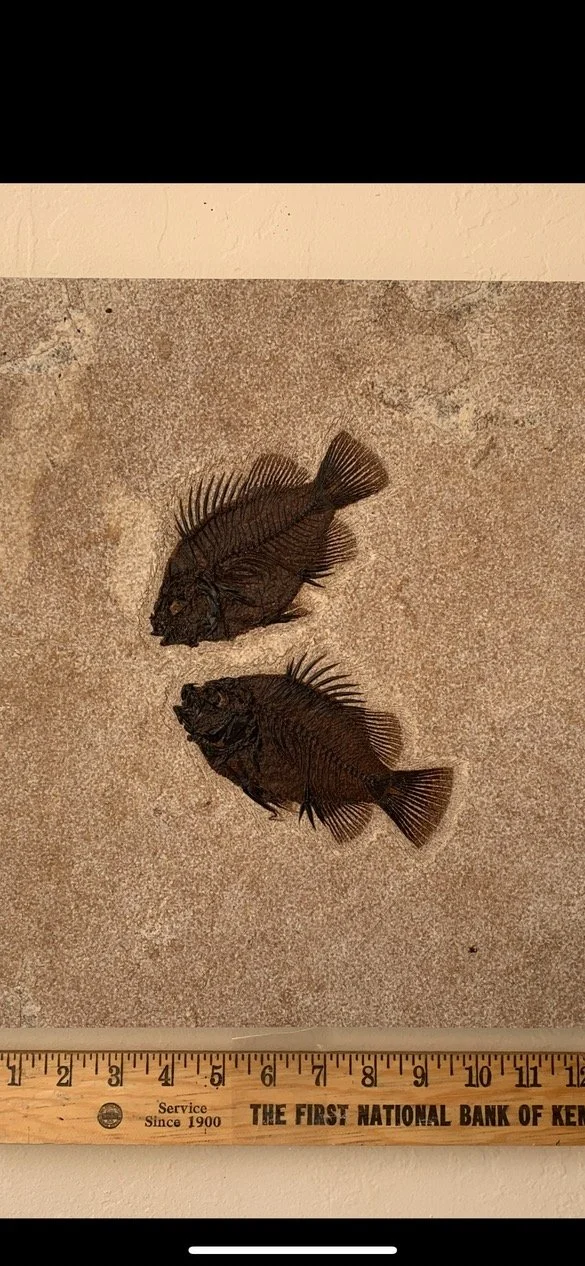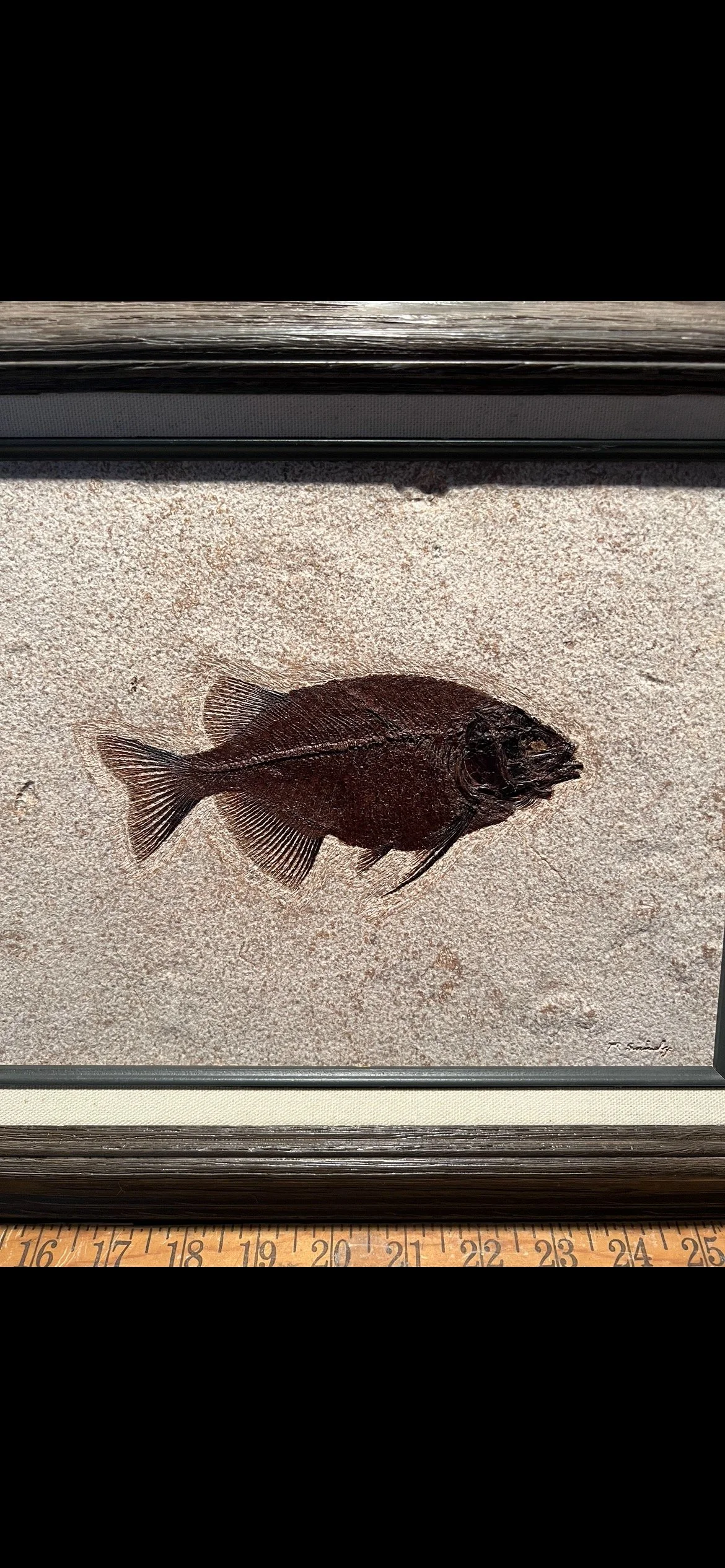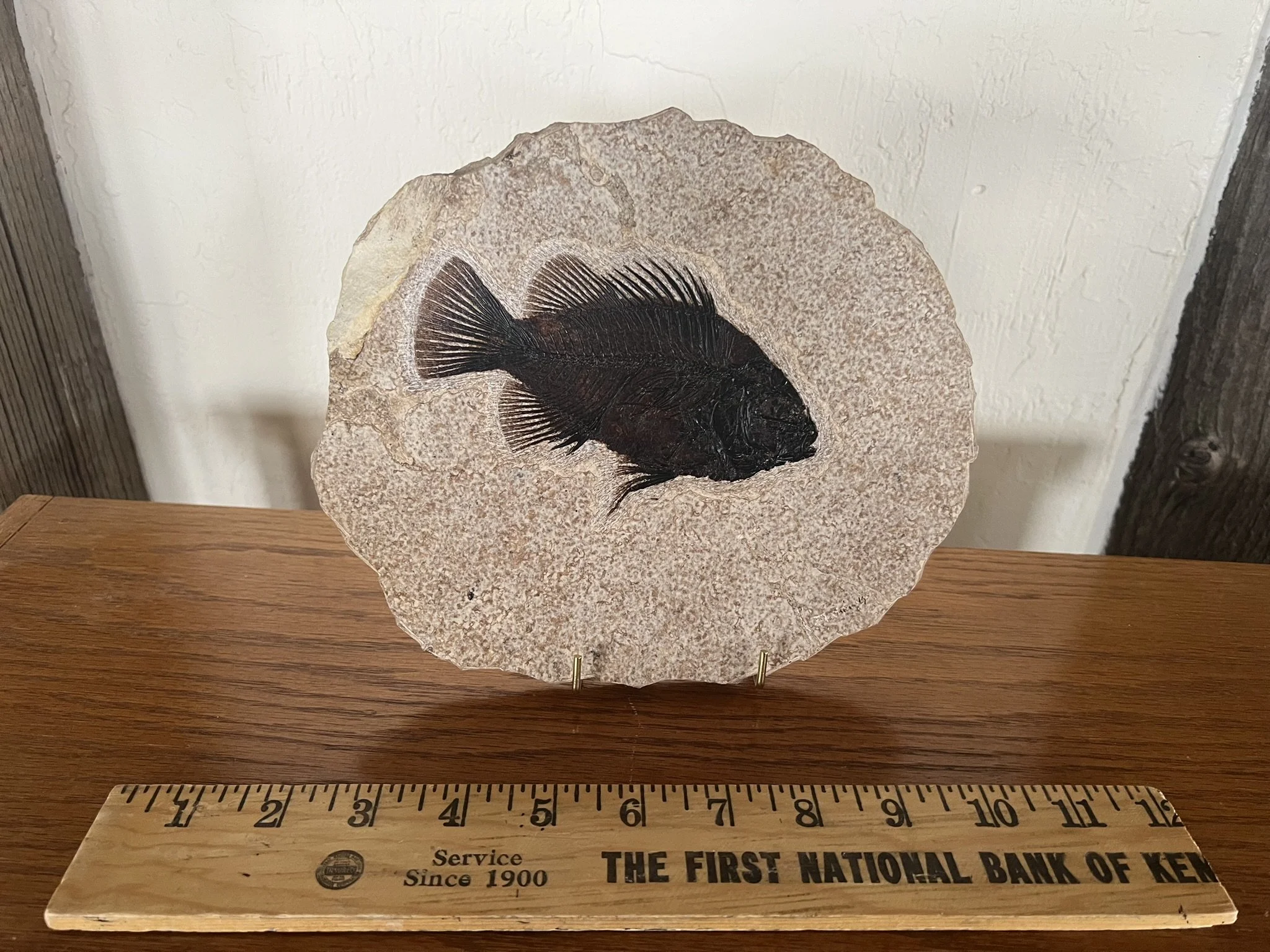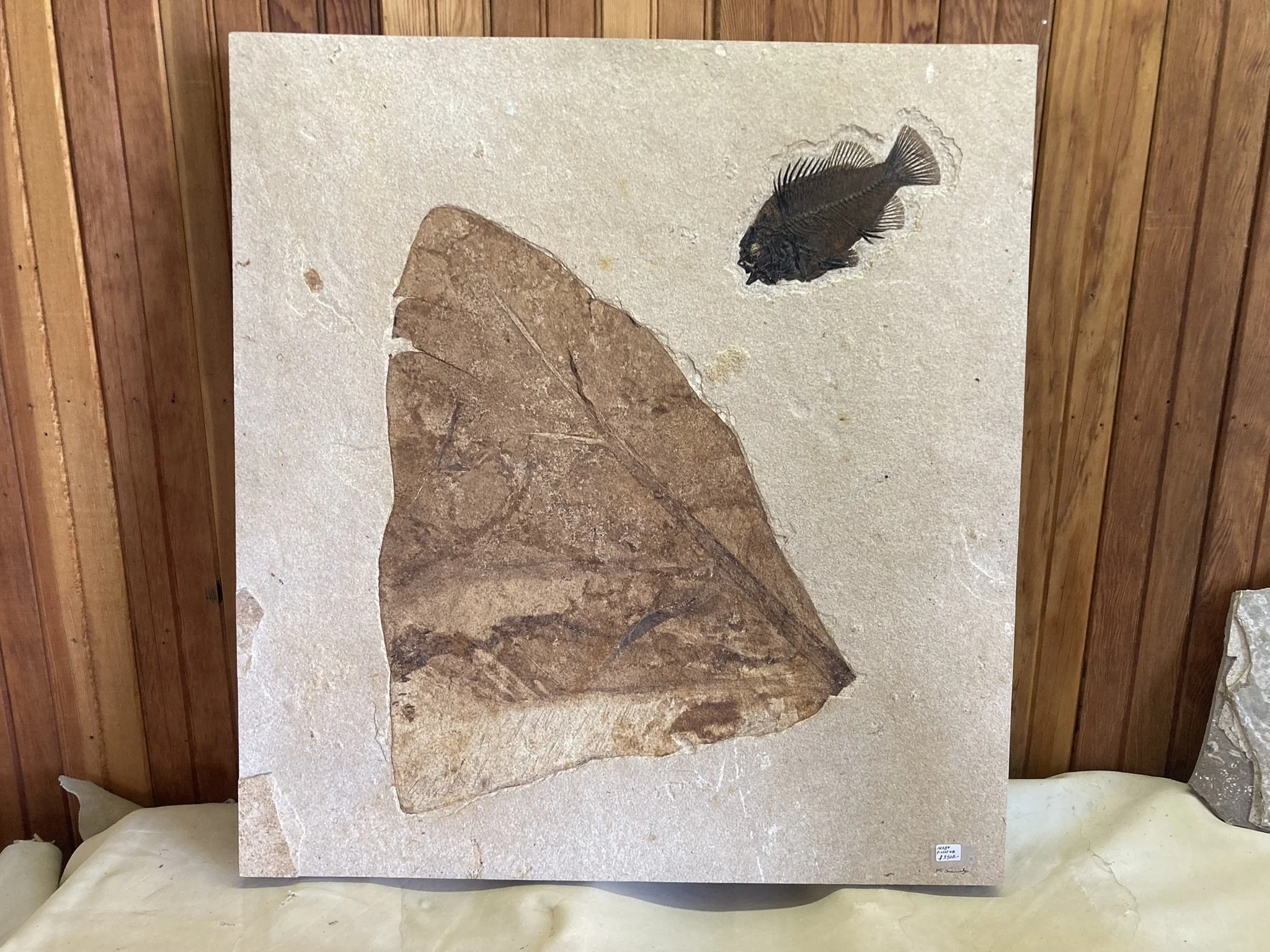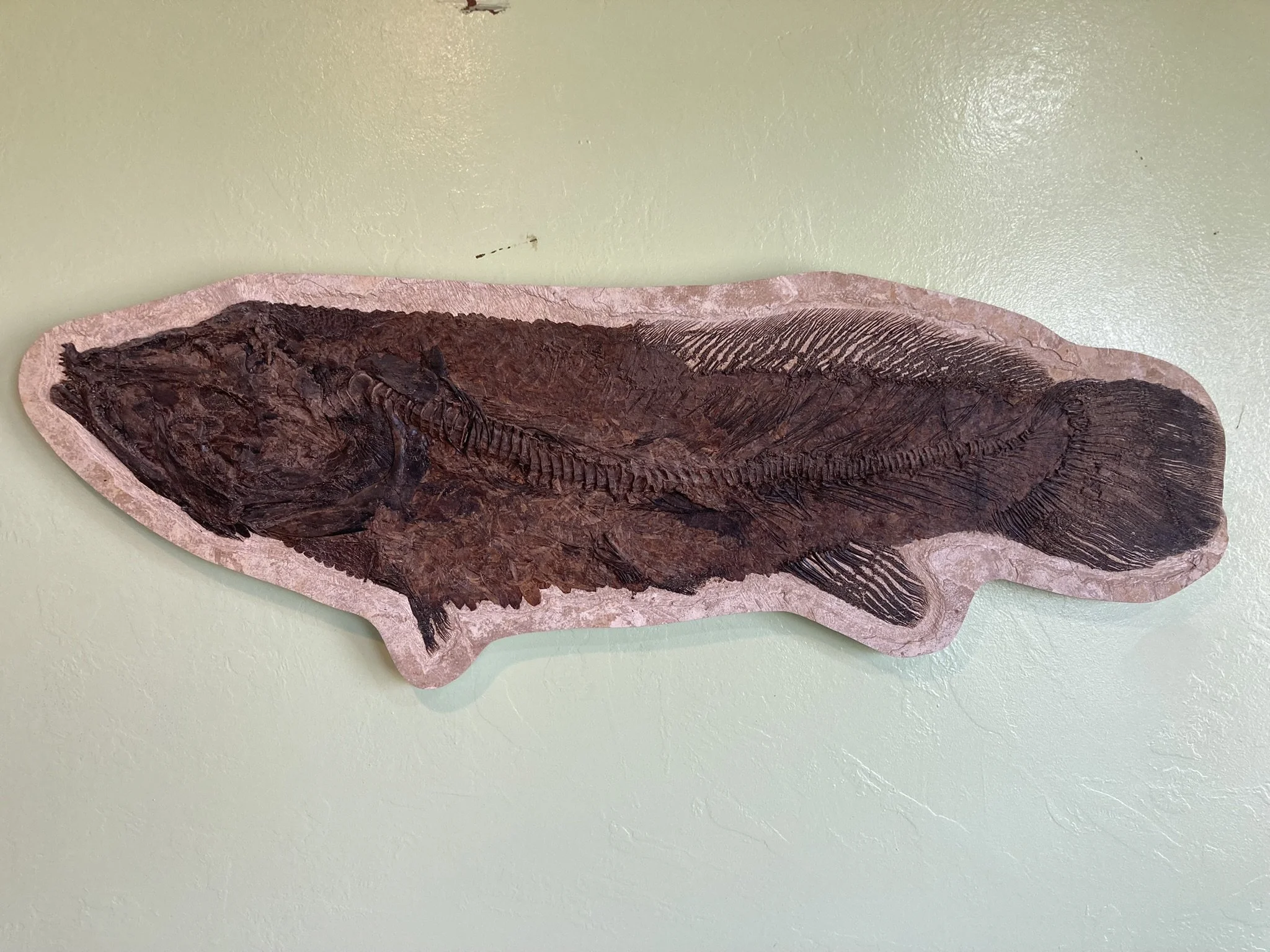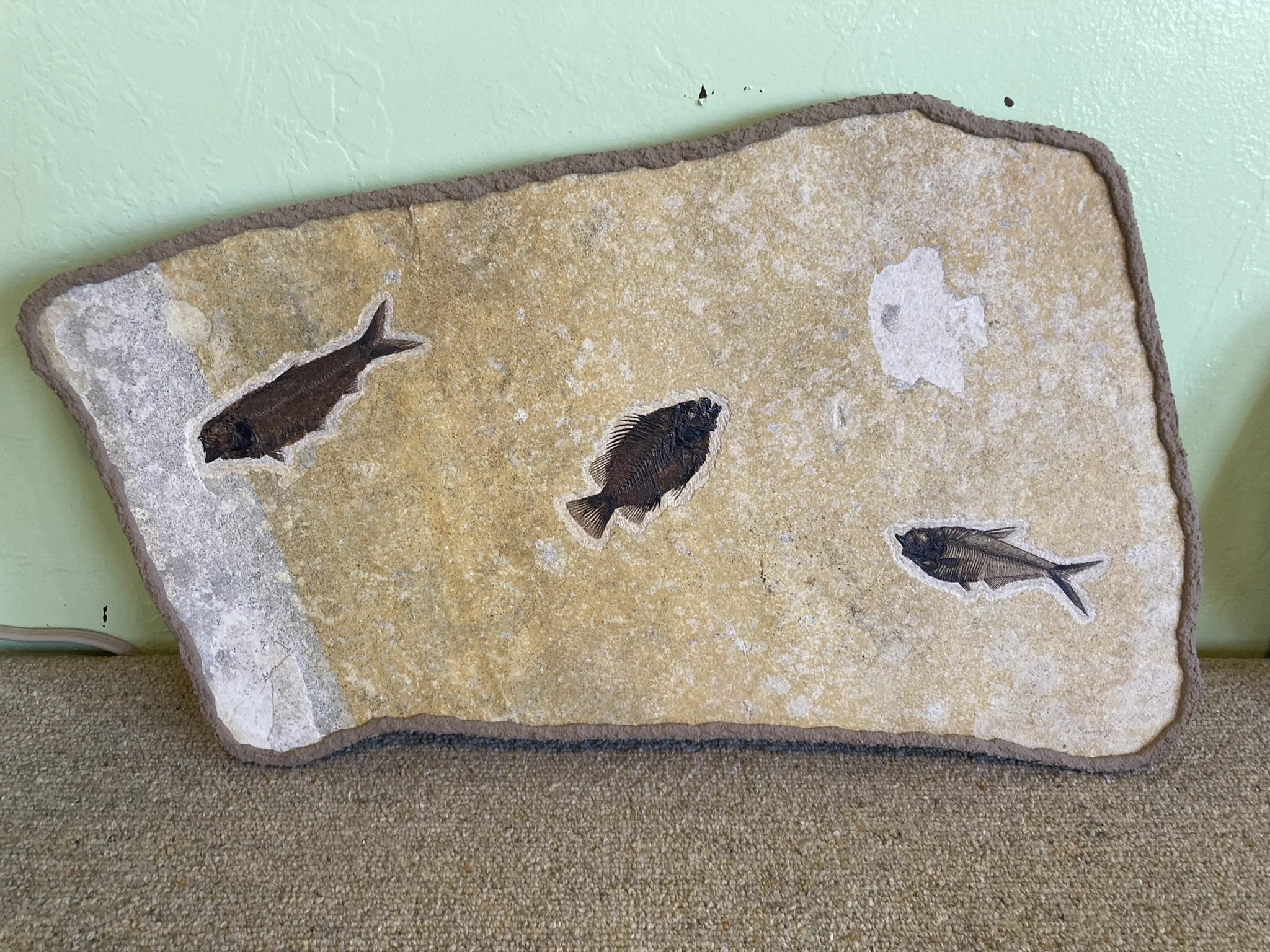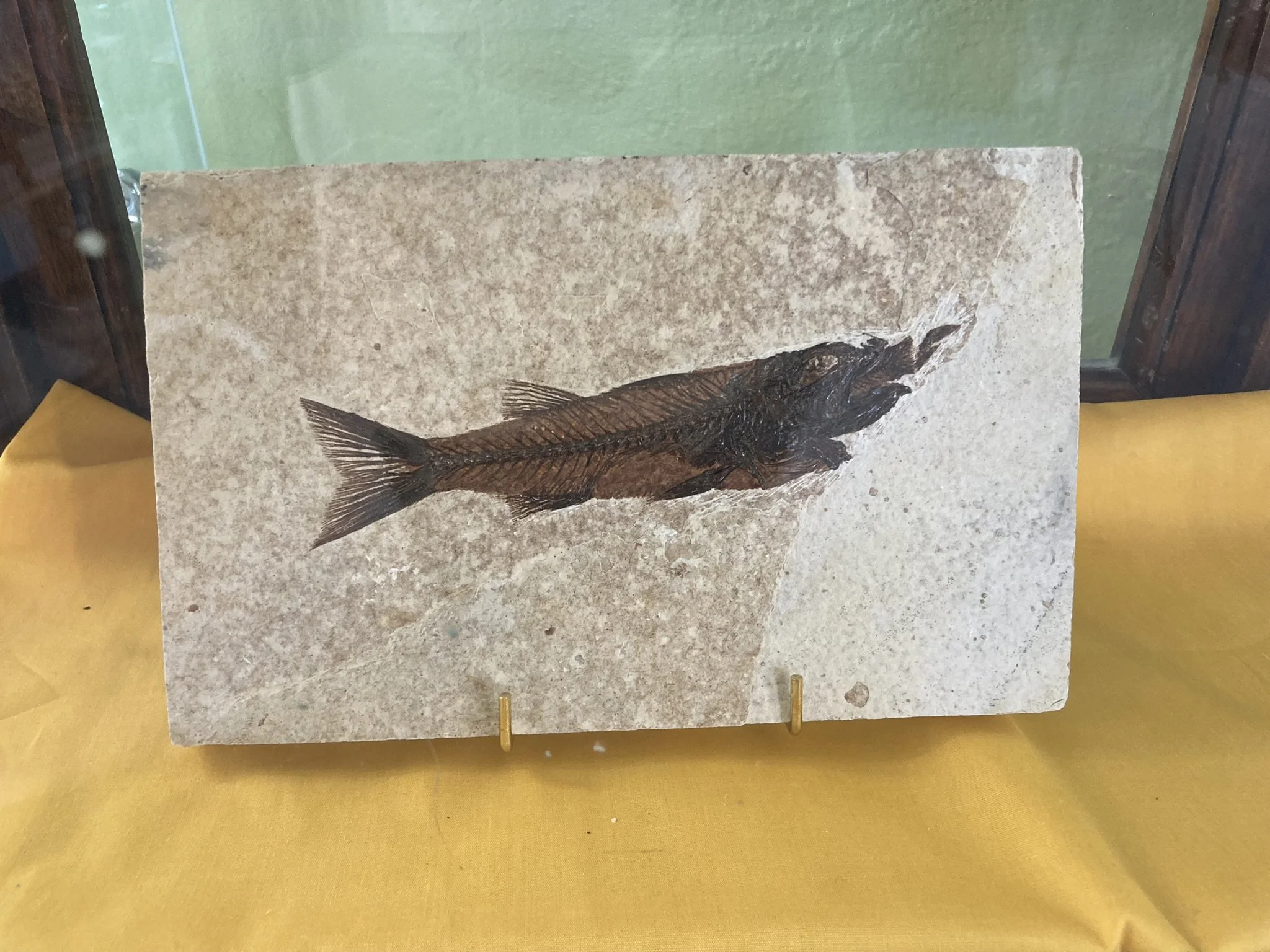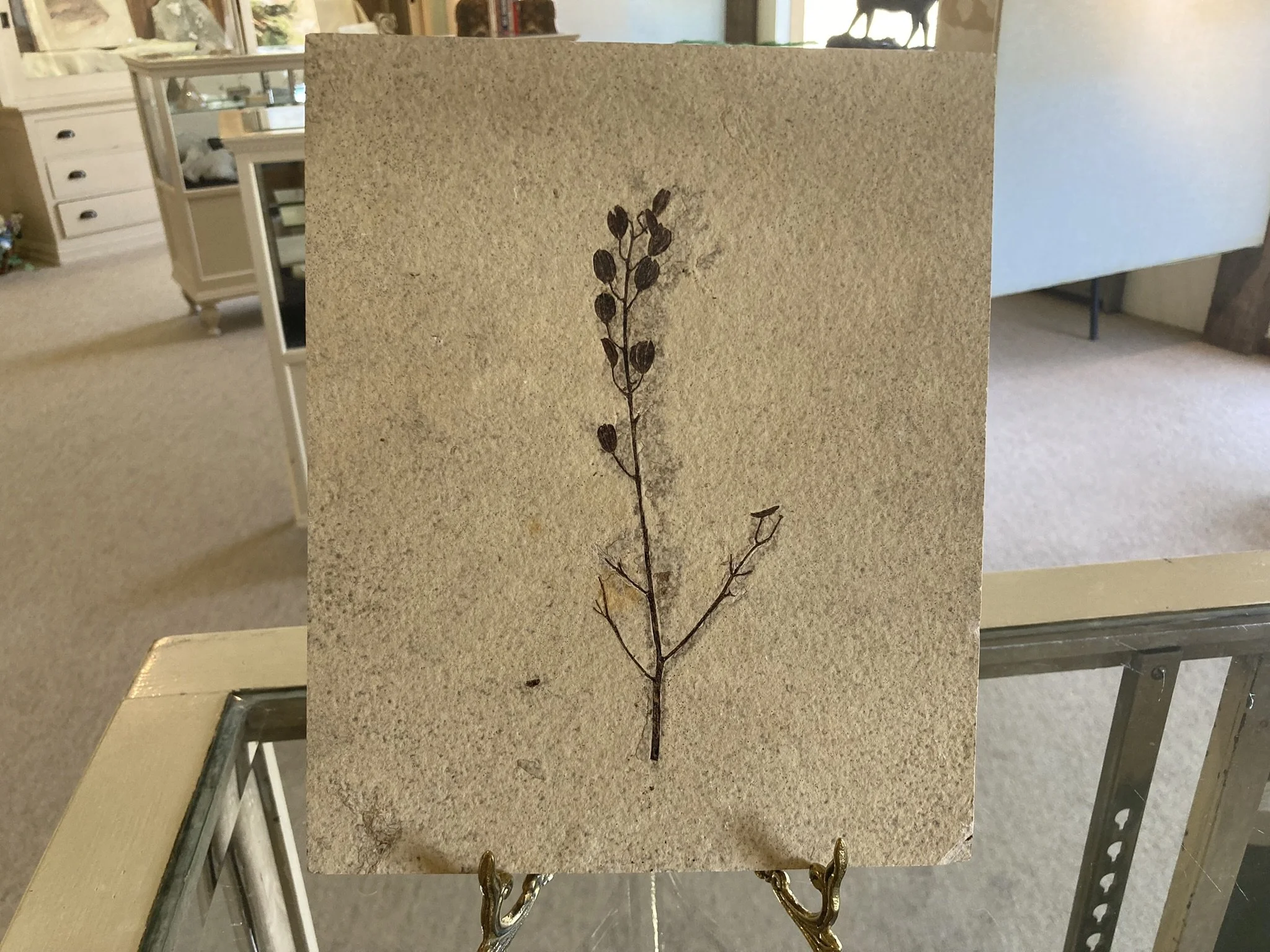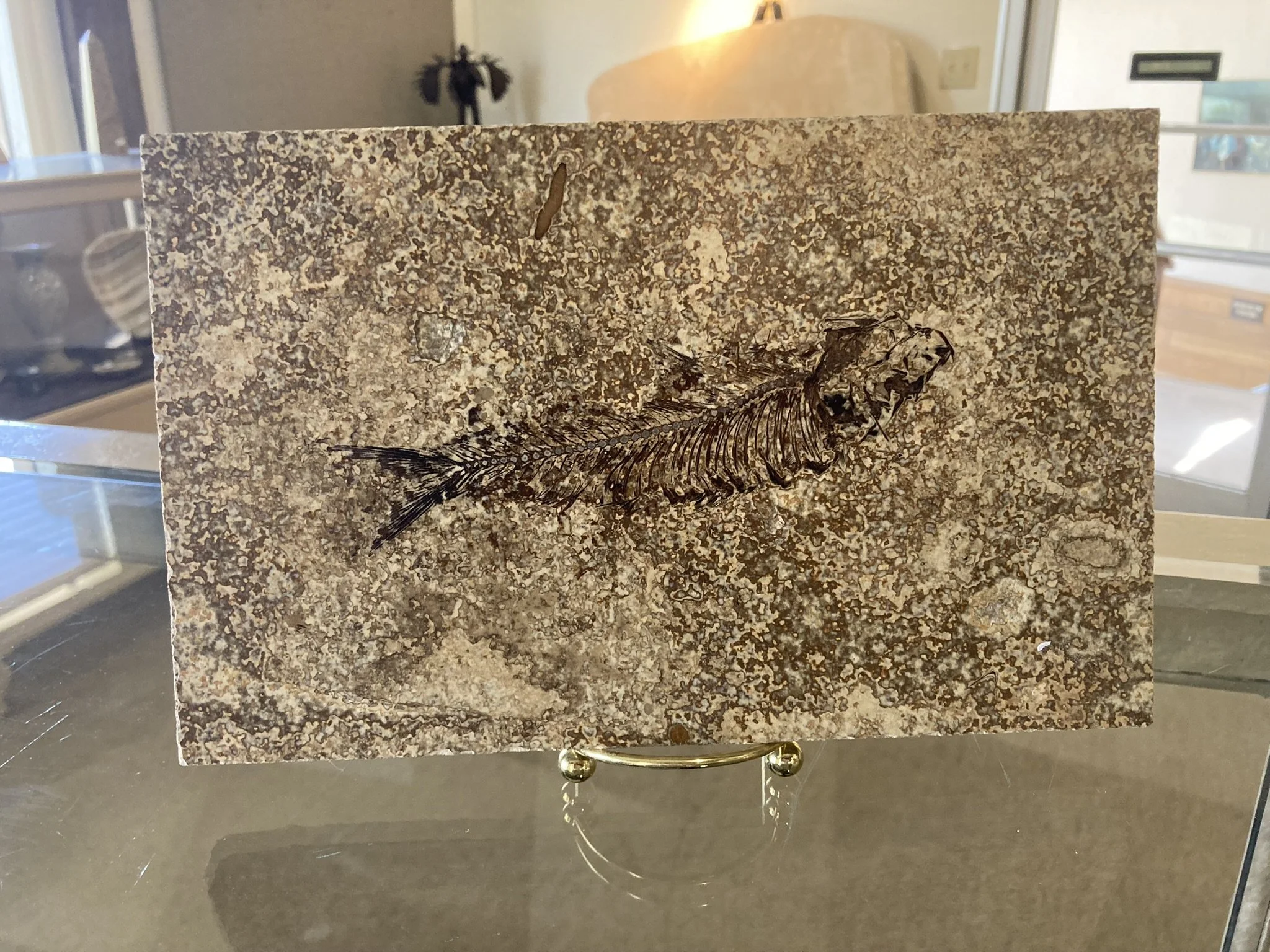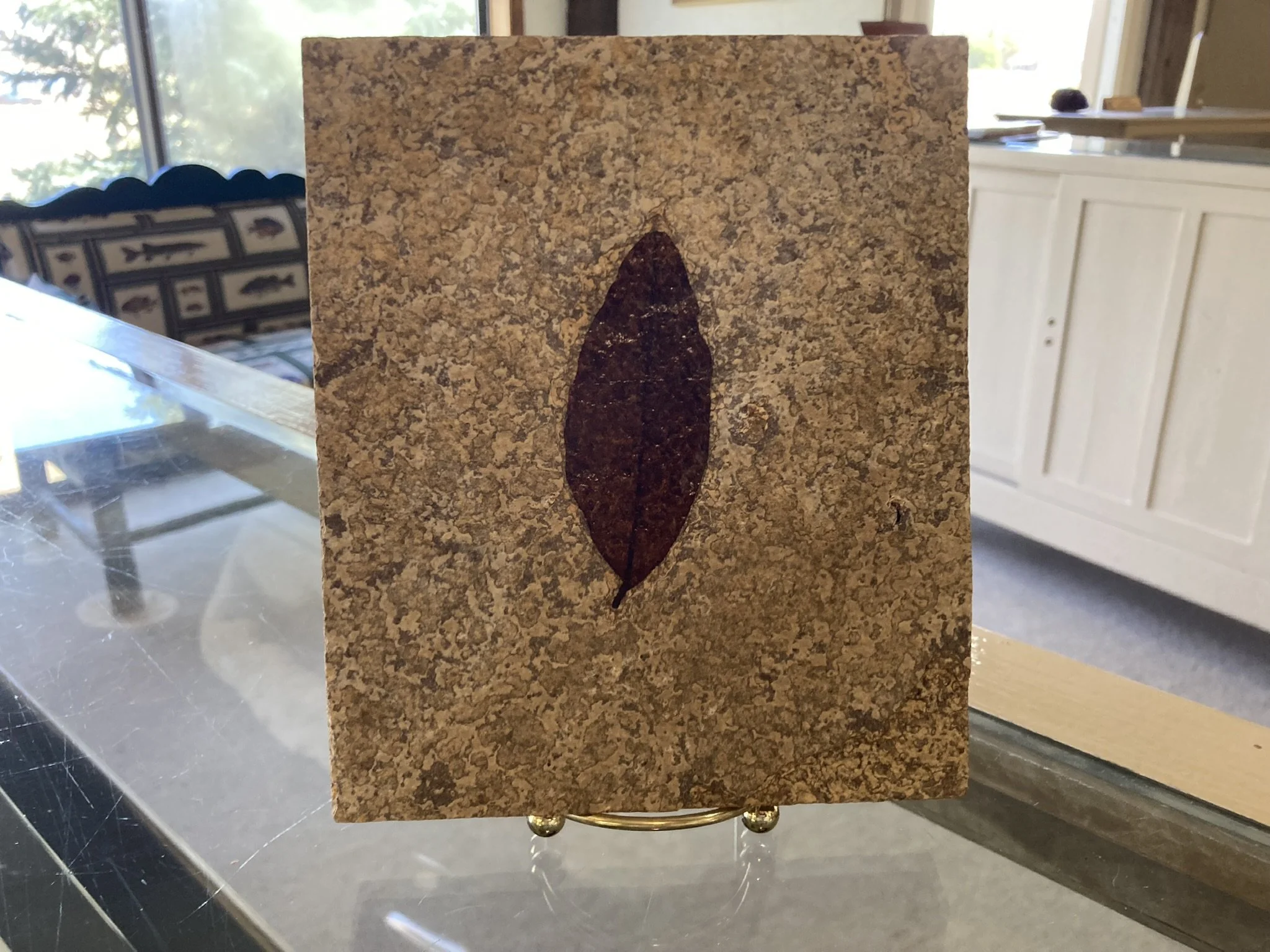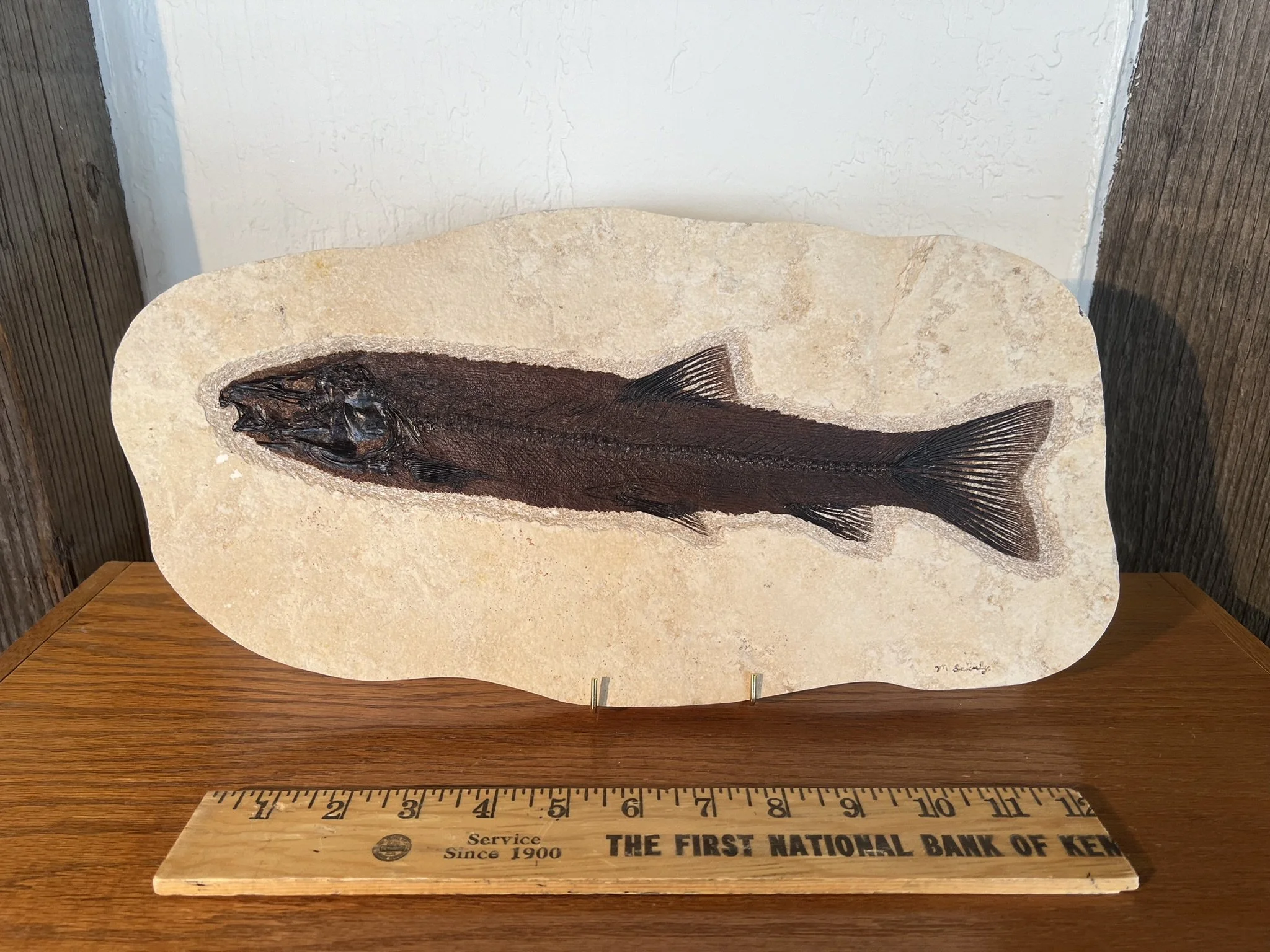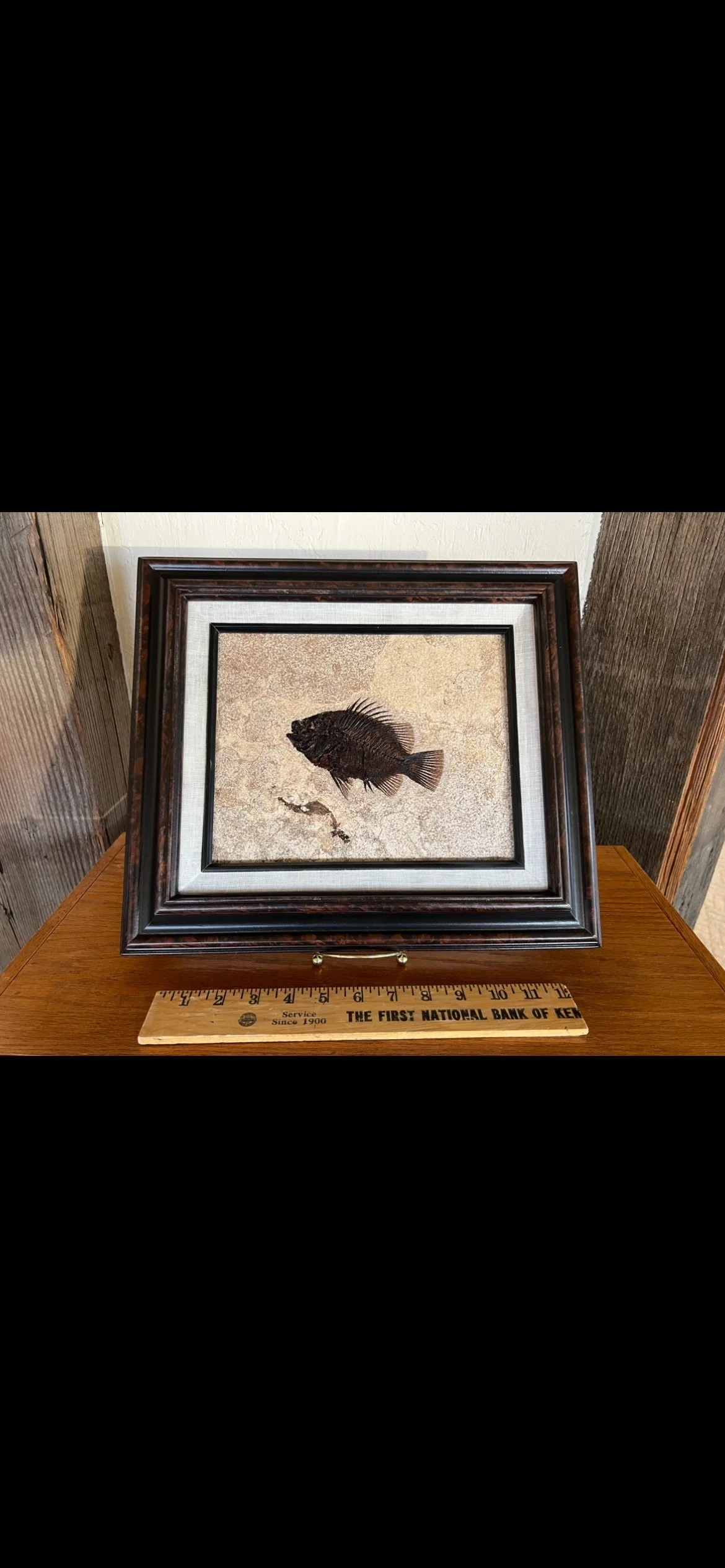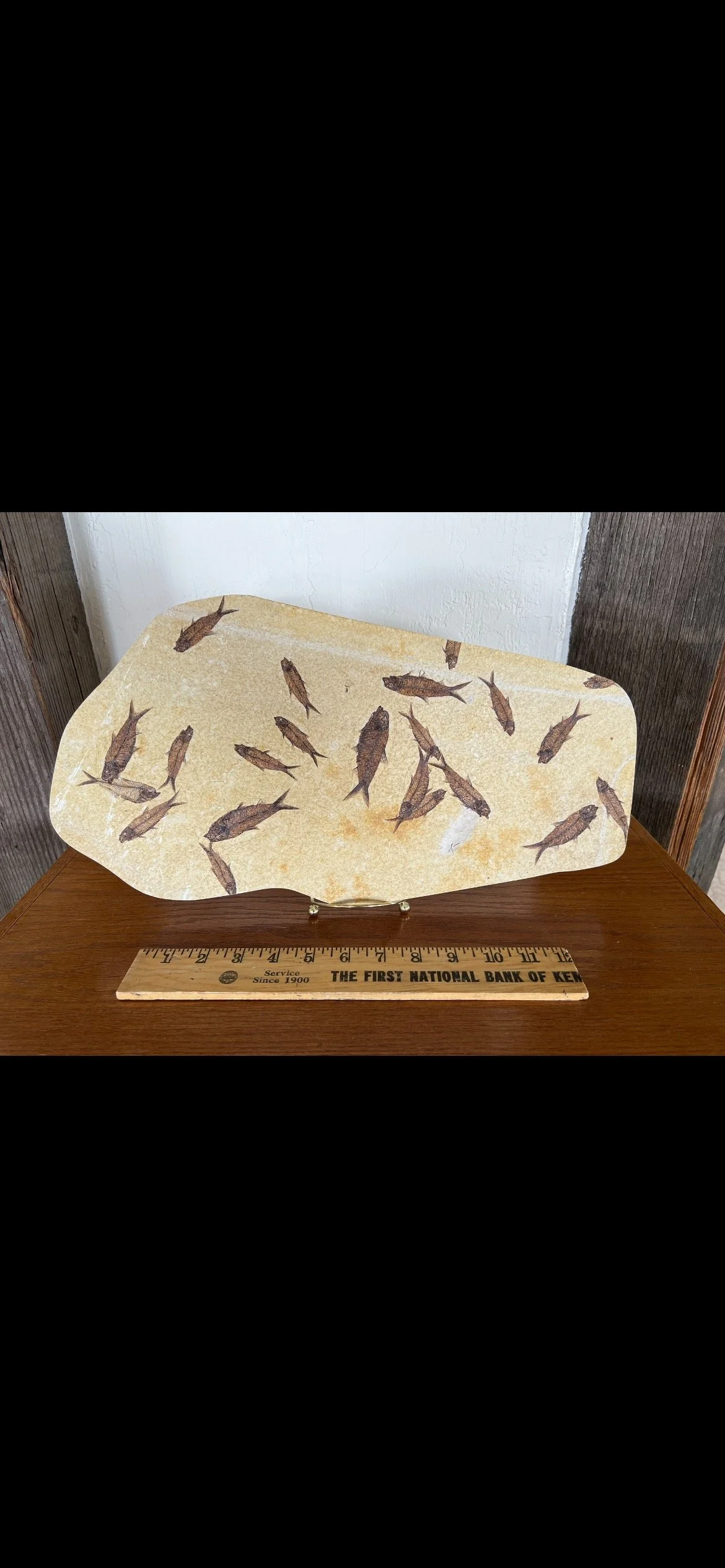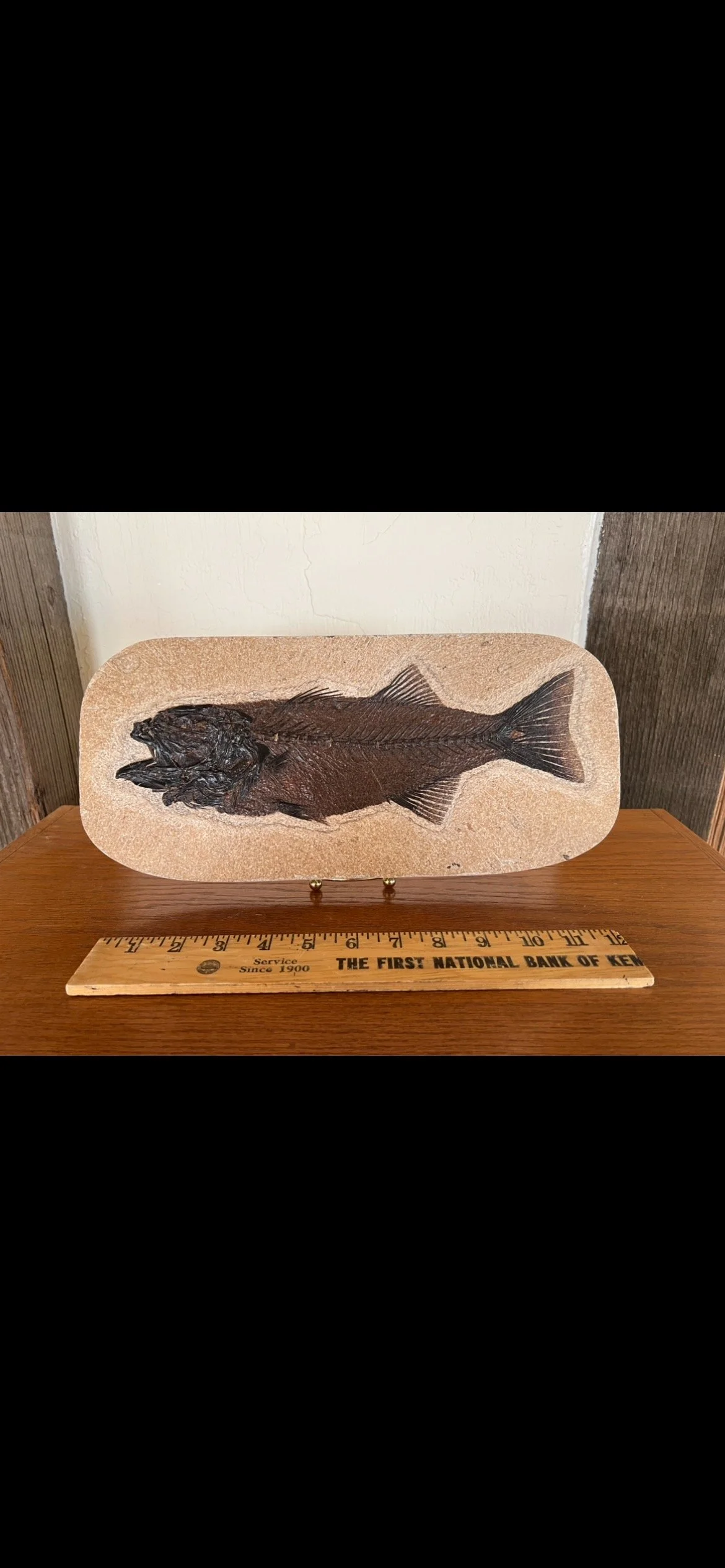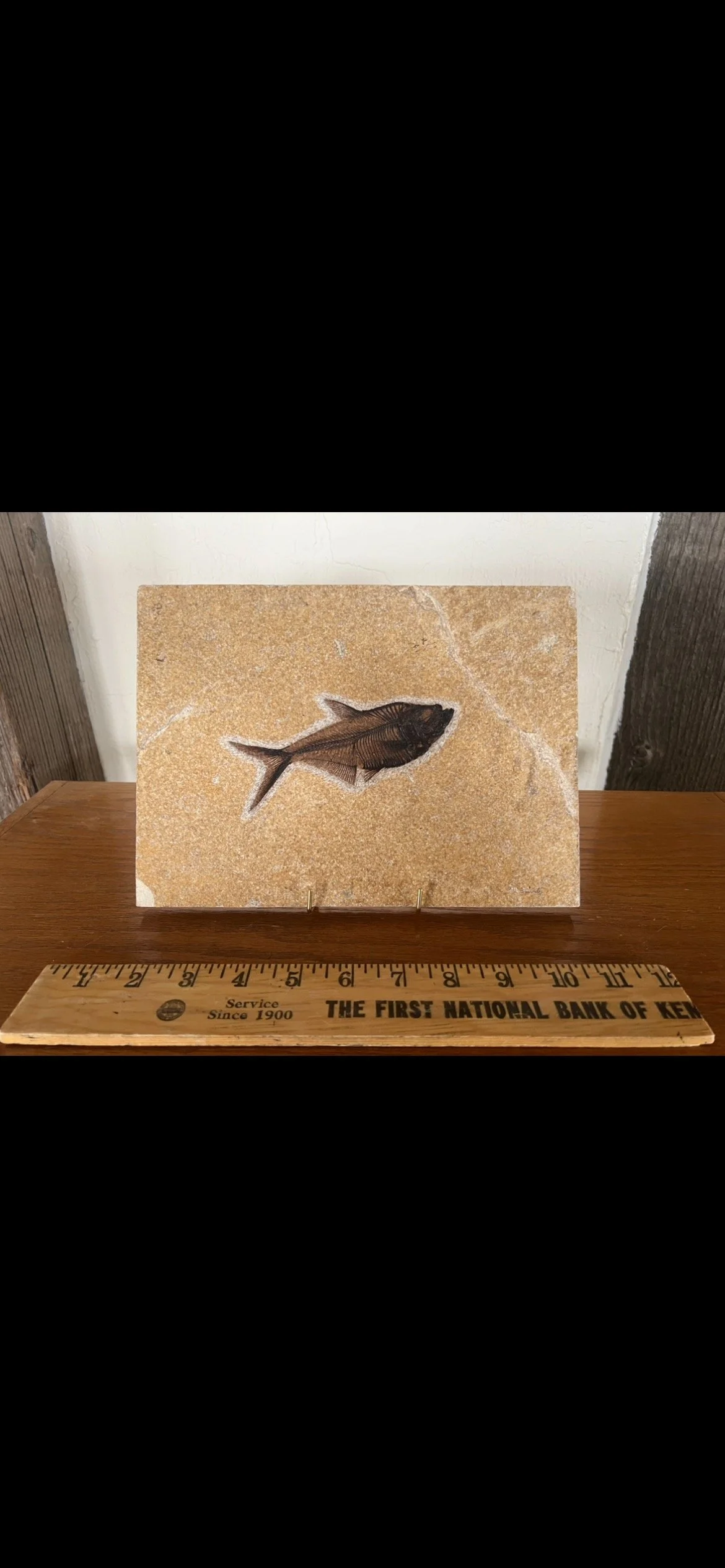Premium Products
Carl Ulrich founded our company on the principle that we would always prioritize quality over quantity in our work, and that we would never compromise on making our pieces the finest in the world. We keep those traditions alive today by ensuring every piece that we sell is of the highest standard. If you’re interested in having a piece like this for your own collection, browse the images below. We’ve displayed examples of every major species that we excavate in both the eighteen-inch layer and the split quarry, as well as a variety of novelty and combination pieces to show the full range of our work. Once you’re familiar with our offerings, contact us and we will discuss what we have available currently as well as what we can/will have available in the near future.
-
A large diplomystus on a uniquely-contoured slab of rock with ripples of yellow-orange kerogen at the tail.
-
A tree branch with a knightia eocaena "swimming" alongside
-
A partial palm leaf with a large knightia alta
-
A closeup on the detail of a stingray from the 18" layer
-
A large diplomystus dentatus in a decorative frame
-
A small piece with knightia from the 18" layer
-
![]()
A uniquely shaped piece with a palm frond and a knightia
-
A large, unframed, miopolsus labraciodes
-
A very large paddlefish (Crossopholis magnicaudatus) in excellent condition joined by three smaller fish
-
Both the positive and negative sides of a plaque from the mass-mortality layer
-
Two similarly sized fish - a large knightia (alta) and a small diplomystus
-
A very large (12") mioplosus
-
A large plaque displaying a variety of species
-
![]()
A large knightia with an unidentified plant (perhaps a shredded piece of a palm frond or reed)
-
A large diplomystus
-
A large diplomystus a beautifully colored rock with swirls of keragen
-
![]()
Two priscacara
-
![]()
A large, framed phareodus
-
![]()
A coffee table made from a mass mortality piece with textured edging.
-
A small priscacara piece with rounded natural edges
-
A large "elephant-ear" leaf with a priscacara
-
A bowfin (Amia) - the largest fish species of fossil lake. This specimen is 56" (nearly 5 feet) in length.
-
Three of the most common fish species in fossil lake - knightia, priscacara, and diplomystus - on a single piece with a unique textured edging.
-
![]()
A large (23") phareodus
-
A mioplosus with a small knightia in its mouth - this is known as an aspiration
-
A portion of a palm leaf
-
An unidentified plant
-
![]()
A "mini-mass" - a small piece of the mass-mortality layer
-
A priscacara liops - a larger subspecies of priscacara
-
A knightia imbedded in "cap rock," prepared by polishing
-
A small leaf
-
A notogoneus
-
![]()
A framed diplomystus
-
![]()
A larger "mini-mass"
-
![]()
A large mioplosus
-
Two knightia on a moderately-sized piece with a natural edge
-
![]()
A unframed diplomystus piece
-
![]()
A small mini-mass
-
![]()
A knightia with a dark-colored (growing-season) background
